Mercedes-Benz has seen several leadership changes in recent years, impacting its strategic direction. Notable transitions include Ola Källenius as Chief Executive Officer, succeeding Dieter Zetsche, and changes within the Supervisory Board, such as the appointment of Renata Jungo Brüngger.
Mathias Geisen took charge of Mercedes-Benz Vans, while Sabine Kohleisen became Head of Human Relations. Olaf Schick, a key board member, has played a significant role in compliance and legal affairs.
These changes were driven by shifting market demands, technological advancements, and sustainability initiatives. The company aims to strengthen its product strategy, focusing on electric vehicles (EVs), artificial intelligence, and generative AI-driven mobility solutions.
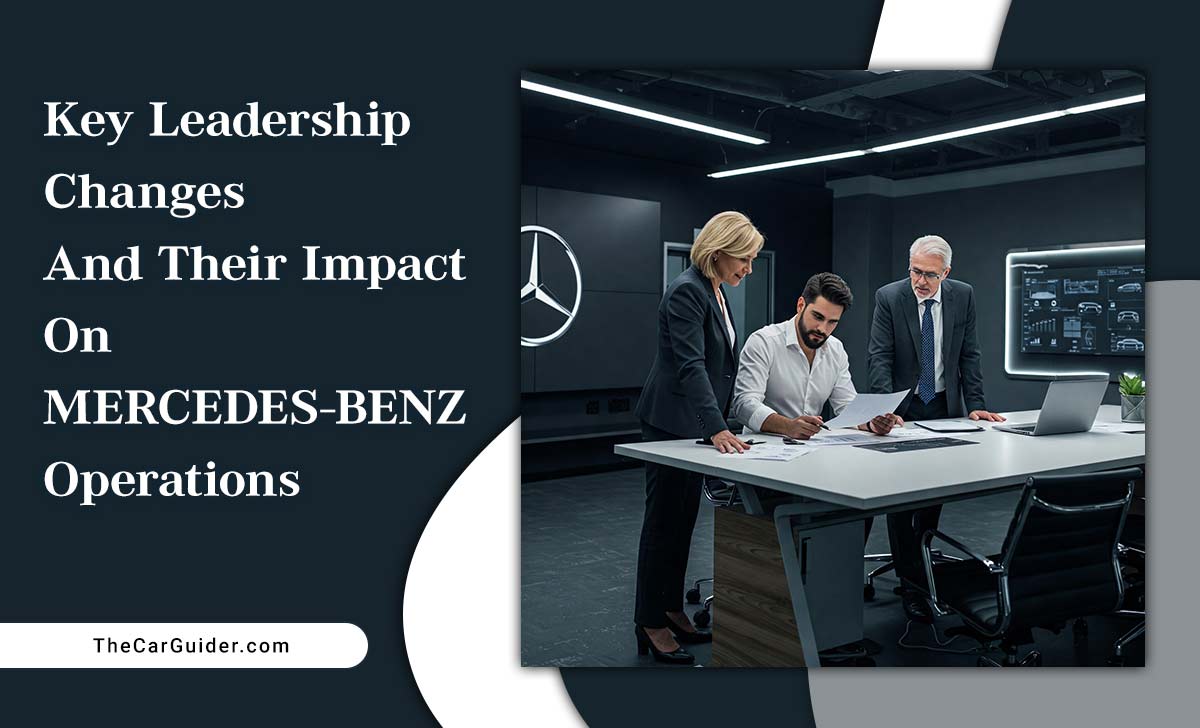
What Is The New Mercedes Strategy?

The key activities of Mercedes-Benz include luxury vehicle production, innovation in electric mobility, and financial services. The company manufactures high-end cars like the Sprinter Van, advances artificial intelligence in production, and provides mobility solutions through Mercedes-Benz Mobility AG.
Additionally, financial operations via Mercedes-Benz Financial Services and strategic partnerships with Daimler Truck AG and Aston Martin play a crucial role in its business model.
The new Mercedes strategy is focused on luxury, electrification, and digital transformation. Under Mercedes-Benz Group AG, the company aims to expand its electric vehicle (EV) lineup, enhance Mercedes-Benz Mobility, and invest in AI-driven manufacturing. The strategy includes cutting lower-margin models, optimizing resource allocation, and strengthening financial services through Mercedes-Benz Bank and Daimler Mobility.
Historical Overview Of Leadership Changes At Mercedes-Benz
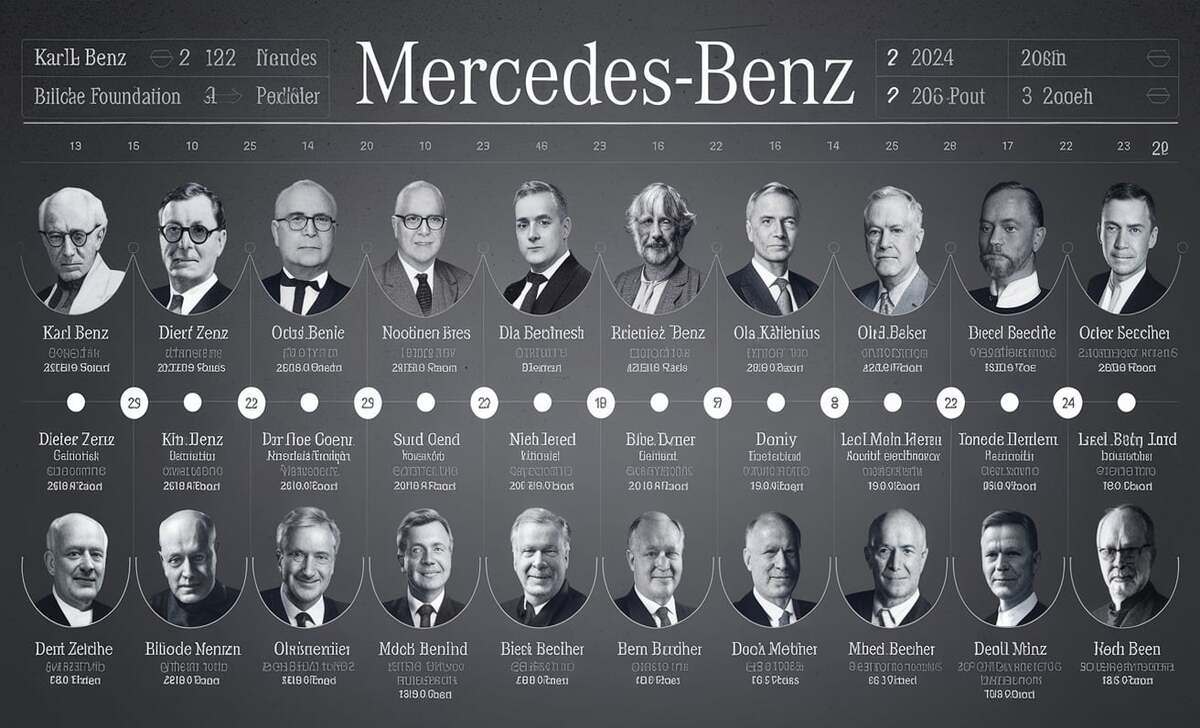
Leadership Timeline from 1926 to 2024
Mercedes-Benz has evolved under influential leaders since the merger of Daimler-Motoren-Gesellschaft and Benz & Cie in 1926. Karl Benz and Gottlieb Daimler laid the foundation. Leaders like Dieter Zetsche and Ola Källenius have shaped modern operations at Mercedes-Benz Group AG.
Key Leaders and Their Tenures
- Karl Benz (Founder)
- Gottlieb Daimler (Founder)
- Dieter Zetsche (1998-2019)
- Ola Källenius (2019-Present)
- Markus Schäfer (CTO, Head of R&D)
- Harald Wilhelm (Chief Financial Officer)
Recent Leadership Shifts At Mercedes-Benz

Overview of Recent Leadership Changes (CEO, Board Members, Executives)
Mercedes-Benz has undergone significant leadership transitions in recent years, as the company navigates challenges and shifts in the automotive industry. Some of the most notable changes include:
CEO Change
Ola Källenius became the CEO of Mercedes-Benz in May 2019, replacing Dieter Zetsche. Källenius, who had been with the company since 1993, assumed leadership during a critical time for the company as it faced increasing competition in the electric vehicle (EV) market and the push for digitalization. Under Källenius’ leadership, Mercedes-Benz has focused on aligning with the future of mobility, particularly electrification and sustainability.
Board Changes
Several key members of Mercedes-Benz’s board of directors have also shifted over the years. The company has made efforts to ensure a smooth transition in leadership while integrating more diverse expertise to navigate technological advancements and new market trends.
The new members appointed to the Board of Management at Mercedes-Benz include Olaf Schick, who will join as a board member on October 1, 2025. Additionally, Mathias Geisen and Oliver Thoene are set to become board members as part of the company’s management reshuffle effective from 2025.
Executives Stepping Down Or Taking Over
Some executives who had long-term roles with the company have stepped down, with new figures taking their place. These changes were often linked to the company’s strategy of restructuring and focusing on innovation.
Key Figures Who Have Stepped Down Or Taken Over
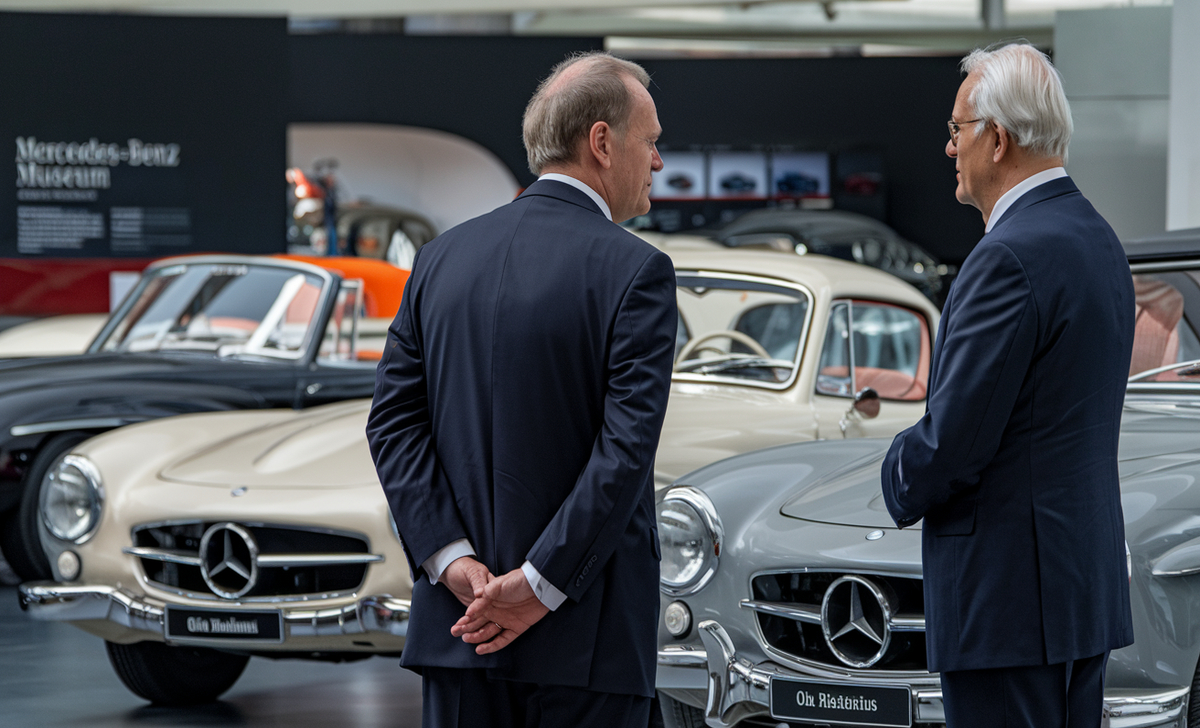
- Dieter Zetsche: After leading Mercedes-Benz for over a decade, Zetsche’s retirement marked a significant shift. His leadership helped guide the company through challenging times and the global financial crisis.
- Ola Källenius: His appointment as CEO reflected a shift toward a more future-focused approach, emphasizing electric vehicles, autonomous driving, and other innovations.
- Board of Management Changes: Changes in key positions such as the Chief Technology Officer (CTO) and Chief Financial Officer (CFO) have also occurred, with the company aiming to strengthen its management in critical areas like digital transformation and cost management.
Strategic Reasons Behind These Changes
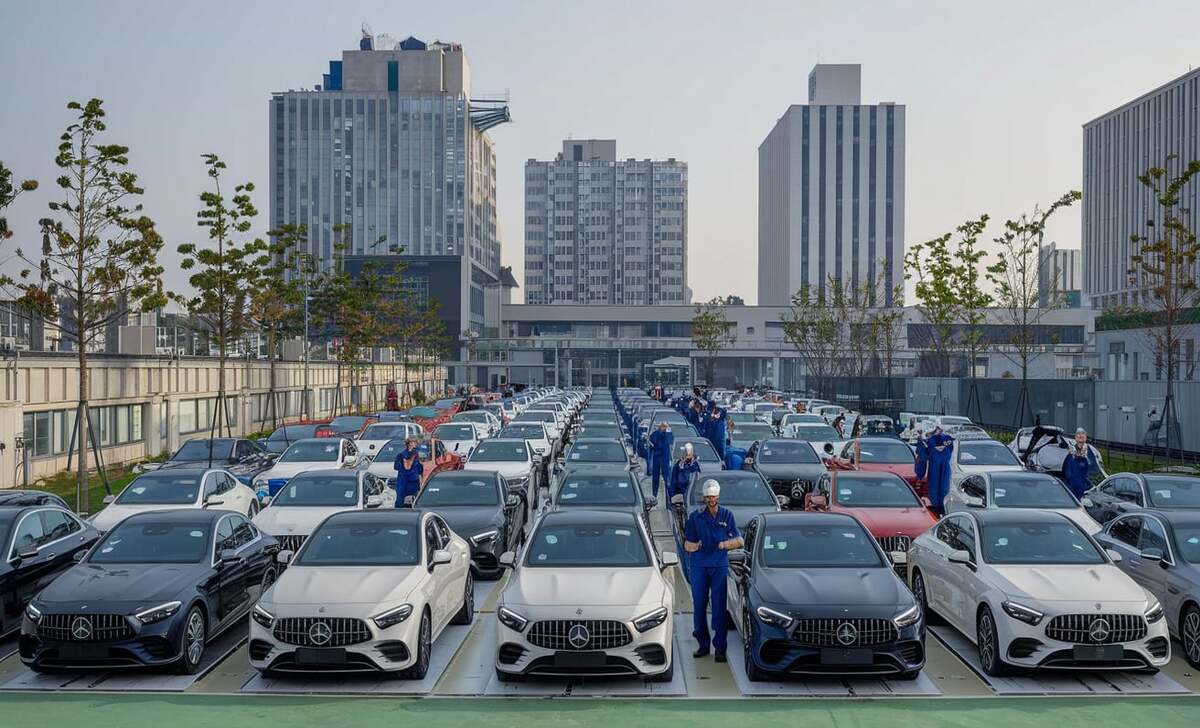
Mercedes-Benz uses a transformational and strategic leadership style that focuses on innovation, sustainability, and luxury market dominance. Leaders like Ola Källenius emphasize technological advancement, customer-centric approaches, and financial agility.
The company fosters a culture of continuous improvement, integrating artificial intelligence, generative AI, and data-driven decision-making into its operations. The leadership shifts at Mercedes-Benz were driven by several key strategic factors:
- Digitalization and Electrification: As part of its strategy to become a leader in electric vehicles, Mercedes-Benz needed leadership that could guide the company through a transformative period. New leadership has focused on accelerating the development of electric models and integrating smart technology into its vehicles.
- Global Market Challenges: The automotive industry is undergoing massive changes, driven by regulatory pressures for sustainability, evolving customer preferences, and intense competition from tech companies. Mercedes-Benz’s leadership reshuffles are part of its effort to better adapt to these challenges.
- Innovation and Sustainability: The automotive industry is transitioning toward more sustainable production methods and technologies. New leadership at Mercedes-Benz has been tasked with driving the company towards carbon neutrality and innovation in autonomous driving.
- Cultural Shift: Mercedes-Benz has also undergone a shift in corporate culture to enhance agility and collaboration. This has involved bringing in new talent from different sectors and diversifying leadership to foster innovation and respond more quickly to industry changes.
Impact Of Leadership Changes On Financial Strategy

Shifts In Financial Prioritization
Leadership shifts have led to changes in financial focus. Under Ola Källenius, Mercedes-Benz has prioritized luxury and EVs, phasing out lower-margin models. The company also increased investments in Mercedes-Benz Financial Services, Mercedes-Benz Bank, and Mercedes-Benz Mobility AG.
Influence On Profit Margins And Revenue
The push for high-end electric vehicles like the EQS and sustainable mobility solutions has increased profit margins. Strategic cost-cutting and resource optimization within Daimler AG and Daimler Mobility have further strengthened financial performance.
Cost Management And Resource Allocation
Through DaimlerChrysler AG’s past lessons and modern efficiency strategies, Mercedes-Benz has optimized resource allocation by integrating artificial intelligence into supply chain management.
Operational Effectiveness Post-Leadership Changes
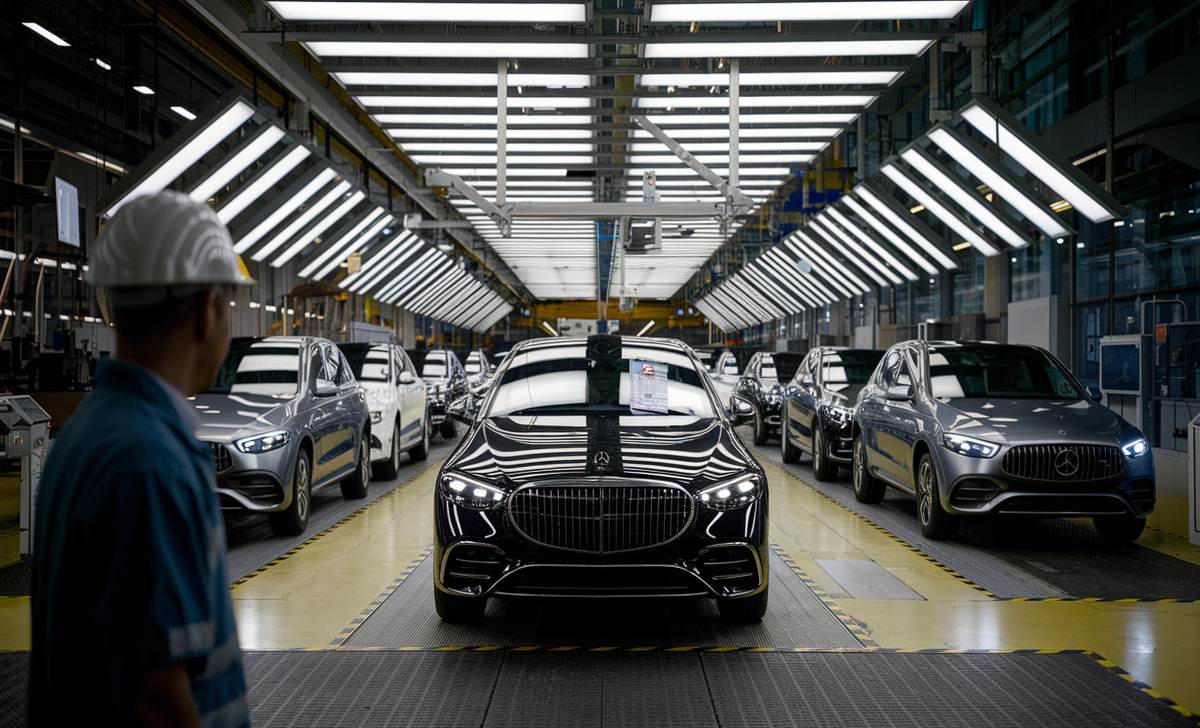
Changes In Production Strategies
Mercedes-Benz streamlined production, focusing on automation and AI-driven manufacturing at plants like North Charleston.
Impact On Supply Chain Management
Supply chain optimizations, including partnerships with Daimler Truck AG and Aston Martin, have improved efficiency. The use of AI and generative AI enhances logistics and inventory control.
Quality Control Improvements
Enhanced AI-driven inspections have boosted product quality, reinforcing Mercedes-Benz as a luxury brand.
SWOT Analysis Of Mercedes-Benz Operations
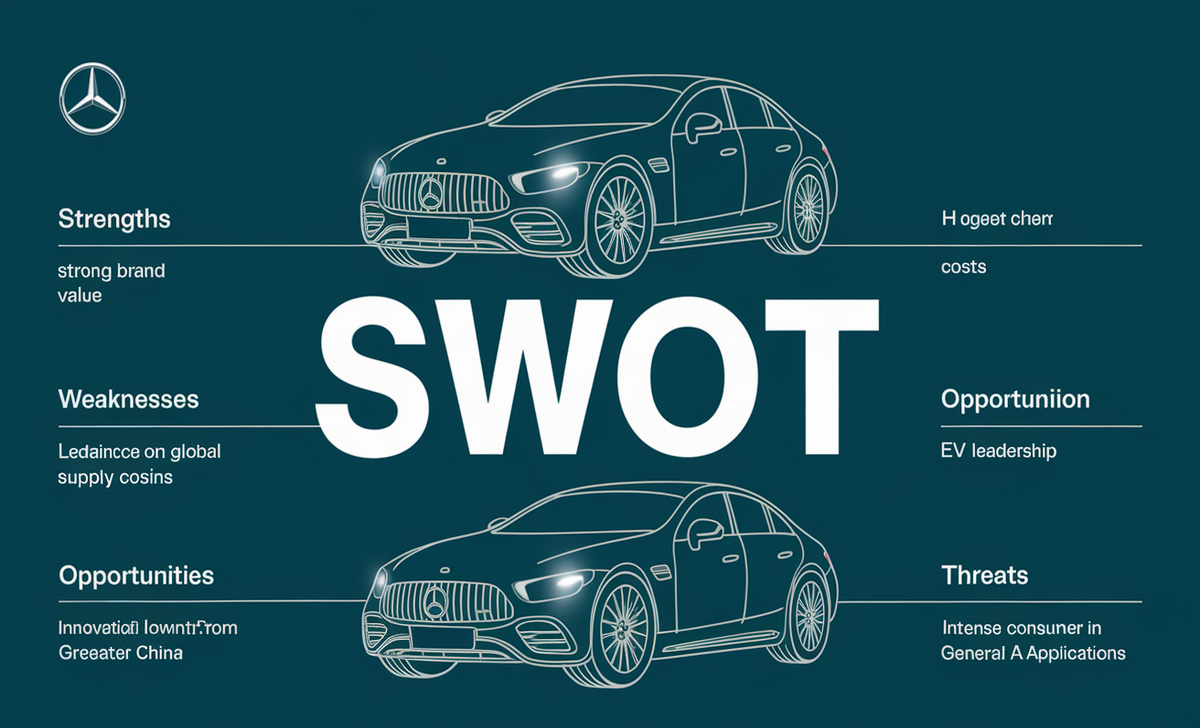
Strengths: Strong Mercedes-Benz brand value, leadership in the luxury automotive industry, technological advancement
Weaknesses: High production costs, reliance on global supply chains, financial services dependency
Opportunities: Expansion in Greater China, EV leadership, innovation in generative AI applications
Threats: Economic downturns, intense competition from General Motors, shifting consumer preferences
PESTEL Analysis Of The Automotive Industry
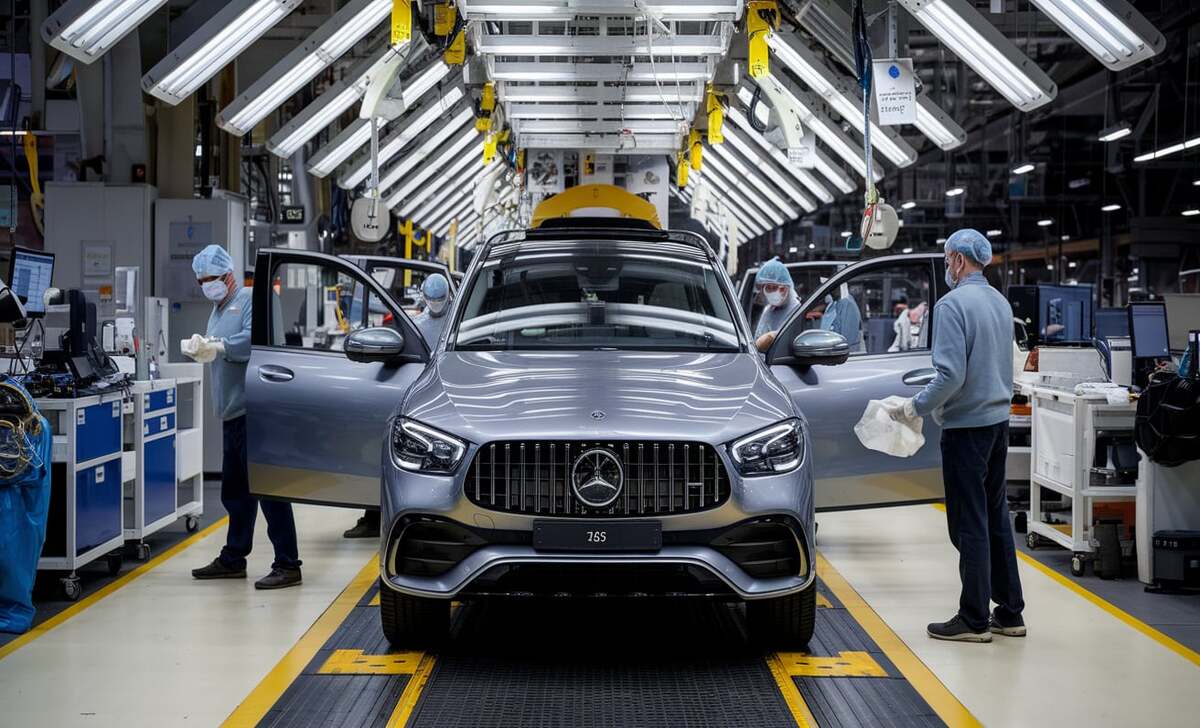
Political: Trade policies, regulatory shifts affecting Daimler AG and Mercedes-Benz Group
Economic: Inflation, fluctuating raw material prices affecting Daimler-Benz AG
Socio-Cultural: Evolving consumer preferences for sustainability and luxury brands
Technological: AI, autonomous driving, product strategy for electric vehicles
Environmental: Sustainability goals, reducing emissions across Mercedes-Benz operations
The Consequences Of Failing To Adapt

Mercedes-Benz has thrived by staying ahead of industry trends. However, history shows that failing to adapt can lead to financial losses. Case studies from DaimlerChrysler AG highlight the consequences of poor leadership choices. Delayed responses to technological advancements and shifts in consumer preferences have cost the company market share. Effective change management is crucial to avoiding such pitfalls.
Historical Case Studies Of Missed Opportunities
Past failures, such as DaimlerChrysler AG’s struggles and lack of adaptation in the luxury segment, highlight the need for agility.
Financial Repercussions
A lack of innovation can lead to market share loss, as seen with Daimler Mobility’s restructuring.
Change Management Strategy
- Key Models for Implementing Change: Mercedes-Benz follows Kotter’s 8-Step Model and other international journal best practices.
- Stakeholder Involvement and Communication: Communication with Mercedes-Benz customers, board members, and employees is key.
- Overcoming Resistance to Change: Training programs ensure seamless transitions in Mercedes-Benz AG.
Leadership transitions demand a strong change management strategy. Key models such as Kotter’s 8-Step Process help streamline transitions. Engaging stakeholders, including board members and employees, ensures smooth adaptation. Transparent communication minimizes resistance to change. Mercedes-Benz Group AG focuses on structured leadership transitions to maintain operational excellence.
Future Considerations For Mercedes-Benz Leadership
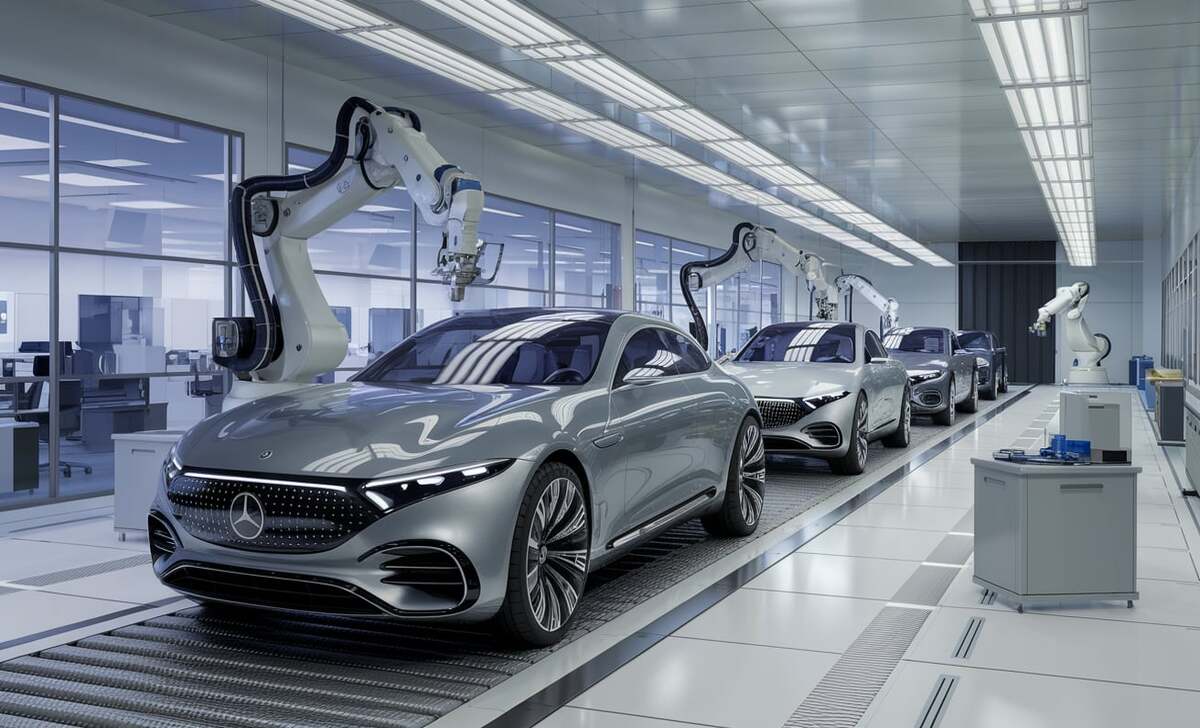
Looking ahead, industry trends will shape Mercedes-Benz’s leadership strategies. The rise of artificial intelligence and generative AI in automotive production will redefine efficiency.
Sustainability remains a top priority, influencing product strategy and financial services. As competition from General Motors and Aston Martin increases, Mercedes-Benz Mobility must continuously innovate to maintain its luxury brand status.
Anticipated Industry Trends
- Growth in EVs and sustainable luxury vehicles
- Increased use of AI, generative AI, and automation in production
- Expansion in financial services via Mercedes-Benz Bank and Mercedes-Benz Mobility
- Enhanced focus on consumer preferences and product strategy
- Strengthening partnerships in the automotive industry for operational excellence
The challenges of Mercedes-Benz include supply chain disruptions, increasing competition, and shifting consumer preferences. The company faces rising production costs, economic instability, and sustainability regulations.
General Motors, Tesla, and emerging EV startups present competitive threats, while adapting to AI, automation, and evolving global trade policies remains a key focus. By embracing change and leveraging leadership expertise, Mercedes-Benz can maintain its position as a global leader in the automotive industry.
FAQs
1.How Have Recent Leadership Changes Affected Mercedes-Benz’s Strategic Direction?
Recent leadership changes have influenced Mercedes-Benz’s strategic direction by emphasizing electrification and digitalization. Under the new leadership, the company continues to focus on its financial strength and aims to solidify its position as a leader in the luxury auto segment.
2.Before Their Departure, What Roles Did Sabine Kohleisen, Renata Jungo Brüngger, And Hubertus Troska Play At Mercedes-Benz?
Before their departure, Sabine Kohleisen was the board member responsible for Human Relations and Labour Director. Renata Jungo Brüngger was a board member overseeing legal affairs and compliance. Hubertus Troska managed operations in Greater China. Their dedication and expertise significantly shaped the company over many years.
3.How Is Mercedes-Benz Addressing The Challenges In The Current Business Environment Through Its Board Reshuffle?
Mercedes-Benz is addressing the challenges in the current business environment through its board reshuffle by implementing a broader transformation strategy. This strategy aims to tackle various challenges and ensure the company’s continued success in a dynamic market.
4.What Impact Did Marcus Breitschwerdt Have On Mercedes-Benz Vans During His Leadership?
During his leadership, Marcus Breitschwerdt significantly impacted Mercedes-Benz Vans by successfully realigning the division in terms of business, strategy, and technology. His efforts resulted in a strong balance sheet, an attractive product portfolio, and a clear course toward an electric and connected future based on the new Van.EA platform.
5.How Does Mercedes-Benz Plan To Maintain Its Leadership In The Luxury Automotive Market Amid Leadership Changes?
Mercedes-Benz plans to maintain its leadership in the luxury automotive market amid leadership changes by focusing on electrification, digitalization, and financial strength. Through these strategic initiatives, the company aims to solidify its position as a leader in the luxury auto segment.
6.What Are The Anticipated Challenges For The New Leadership Team At Mercedes-Benz?
The anticipated challenges for the new leadership team at Mercedes-Benz include navigating a rapidly changing automotive industry, addressing the shift toward electrification and digitalization, and maintaining financial strength in a competitive luxury market.
7.How Has The Departure Of Key Board Members Influenced Mercedes-Benz’s Operations In Greater China?
The departure of key board members, such as Hubertus Troska, who managed operations in Greater China, has influenced Mercedes-Benz’s regional operations by necessitating adjustments in leadership strategies to maintain and grow its market presence.
8.What Steps Is Mercedes-Benz Taking To Ensure A Smooth Transition During Its Leadership Changes?
Mercedes-Benz is ensuring a smooth transition during its leadership changes by appointing experienced individuals to key positions and aligning the new leadership team with the company’s strategic goals. This approach aims to maintain continuity and drive future success.
9.How Does The Appointment Of Olaf Schick As A Board Member Impact Mercedes-Benz’s Compliance And Legal Affairs?
The appointment of Olaf Schick as a board member is expected to impact Mercedes-Benz’s compliance and legal affairs positively, given his background as the CFO of Continental and his expertise in these areas. His experience will strengthen the company’s compliance framework and legal strategies.